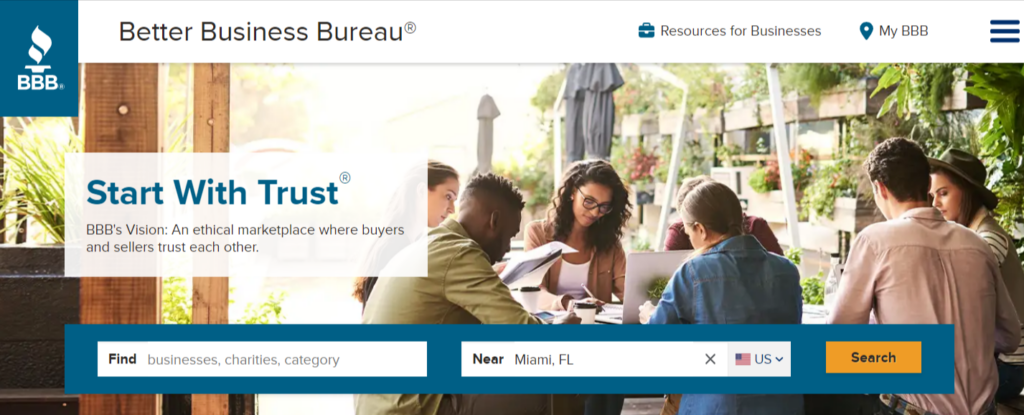If it’s your first time selling a car, you’re probably wondering about the waivers and other paperwork you’ll need to officiate the sale. A release of liability form is essential in ensuring that you’re not financially responsible for a car you no longer own. In this article, we’ll go over how to check the release of liability on a car.
What is Release of Liability on a Car?
The release of liability form — officially known as the Notice of Transfer and Release of Liability form — is a document that you’ll be legally required to fill out upon selling your car.
The purpose of this form is to notify the Department of Motor Vehicles (DMV) that you have sold your car and are transferring the ownership to someone else. To process the release of liability on a car, there are a few things you’ll need:
- The license plate number and last five digits of your VIN or vehicle identification number
- Vehicle odometer reading on the date of the transfer or sale
- Make, model, year, and color of the vehicle
- Date of title transfer
- Name and contact information for you and the new owner
- Valid ID (driver’s license, passport, etc.)
Why Do You Need Release of Liability After Car Sale?
While most people think that the release of liability form is just an annoying extra step that everyone has to go through when selling a car, there’s actually a good reason why you need it.
By notifying the DMV that the ownership of the vehicle is changing hands, you’re protecting yourself from any future liability that may result from that car. If you don’t process the release of liability form, then you could be liable for the new owner’s:
- Parking tickets
- Citations
- Criminal offenses involving the vehicle (such as reckless driving, theft, and even vehicular homicide)
Do note that simply submitting your release of liability form isn’t sufficient to protect yourself from any offenses that occur in the future. You’ll have to wait until the DMV has received and processed an application for transfer of ownership and the payment of any fees by the new owner of your car.

How to Check Release of Liability on a Car?
If you want to check the status of a release of liability application for a vehicle, there are three steps you’ll need to go through:
#1 Review sales records
Most sales records should have a copy of the release of liability form that was filed with the DMV during the transfer of ownership process. You can use this form to verify that the VIN and plate number were accurately listed.
If either of these numbers is missing or incorrect, then the DMV will not be able to process the release. Any notice requesting that you renew the vehicle registration for a car you’ve already sold is a clear indicator that the release of liability form was not processed.
#2 Lookup the vehicle on the DMV website
If you’re buying a car but aren’t sure if the release of liability form has been processed by the previous owner, you can actually search the DMV’s website to see the status. Simply visit the DMV’s search page and enter:
- The plate number of the vehicle
- The last five digits of the vehicle identification number

This will show you the status of the vehicle’s release of liability.
#3 Follow up with the DMV
If you’ve recently sold your car and the buyer agreed to handle the release of liability paperwork, you can use the DMV website to verify whether they’ve actually done it or not.
If you don’t see the status updated on the DMV website, you should take it upon yourself to immediately file a new release of liability form. Any delay could leave you open to civil or criminal liability.
How to Protect Yourself When Selling a Vehicle
Submitting a release of liability form when selling your car is a good start, but there are other ways to protect yourself too. Let’s take a look at a few best practices that car owners can use when selling their vehicles.
#1 Avoid fake escrow services
Escrow services are a popular choice when selling vehicles since they can protect both the buyer and the seller. It does this by holding the buyer’s payment and only transferring it to the seller once the vehicle purchase has been delivered.
The issue is that many fraudsters create fake escrow services that con the owner of the car into turning over the vehicle without receiving the money afterward. To avoid fake escrow services, you should:
- Verify the legitimacy of the escrow service with your state’s regulators
- Navigate to the escrow service through Google rather than clicking on a link from the buyer
- Check the Better Business Bureau for the escrow service’s profile
- Dial the official hotline of the escrow service
- Avoid buyers who are overly insistent on using an escrow service that you’re not familiar with.

#2 Create a paper trail
While those buying or selling cars from dealerships won’t have to worry about the paperwork, creating a paper trail is essential if you’re conducting a private sale of your vehicle.
Most states require that the seller signs on the back of the vehicle title with information such as the date, price of sale, and current odometer reading. This will ensure that all the key information is present on a signed paper trail.
Sellers may also be required to complete a bill of sale form.
It’s worth noting that paper trails don’t need to consist of hard-copy physical documents. A more convenient and reliable way to create a valid paper trail is through digital signature solutions like PandaDoc Waivers.
#3 Use accurate information
The plate number and vehicle identification number are what most car sellers focus on when submitting their release of liability form. However, the odometer reading can be just as important in protecting you from liability.
It’s crucial that you enter the exact reading on your release of liability application. If you round up by a few miles and the buyer gets into a car crash shortly after acquiring the car, you could still be on the hook for the damages.
State guidelines on transferring ownership and liability when selling your car will vary but, in general, it is the seller’s responsibility to ensure that all the necessary paperwork is taken care of.
Certain states will also require that you surrender your license plates to cancel the vehicle registration under your name. Be sure to check with your state’s DMV so you know if you’re required to submit the license plates or not.
#4 Censor-sensitive information
Before turning over the vehicle’s service records to the new owner, use a permanent marketer to censor any sensitive information. This could include your personal phone number, credit card information, home address, and any other information that you don’t want to be made public.
If the vehicle you’re selling originally came from a dealership, be sure to remove any copies of credit applications or contracts as they could contain your social security number and other information that might lead to identity theft.
#5 Utilize legally binding contracts
A written note with the terms of the sale and the buyer’s signature may not be enough to enforce the deal in every jurisdiction. To ensure that the sales contract is binding and the buyer can’t go back on the deal, it should have the following:
- A description of the product
- Full legal names of the parties involved (buyer and seller)
- Date of contract
- Binding signature
If you want to ensure that your contract is legally binding, you can use our e-signature software or go through our car contract templates.
Final Thoughts
As you can see, selling a car doesn’t have to feel like a gauntlet of liability and scammers. If you follow the best practices outlined in this article, you’ll be able to protect your interest in case things go south. If you need to sign a release of liability on a car, PandaDoc Waivers can help you create and send legally-binding forms in minutes and absolutely at no charge.
FAQs
-
To check the status of a car title, you need to submit the license plate and the last five numbers of the vehicle identification number to the Department of Motor Vehicles (DMV) in your state.
-
Enter the license plate on the DMV website of the state that issued the car’s license plate. If the vehicle presents a threat to public safety or is illegally parked on your property, then you can call the police and provide the license plate number.
-
The best way to notify the DMV about the sale of your vehicle is by submitting an NRL — Notice of Transfer and Release of Liability. You can find more information on NRLs on your state’s DMV website.


